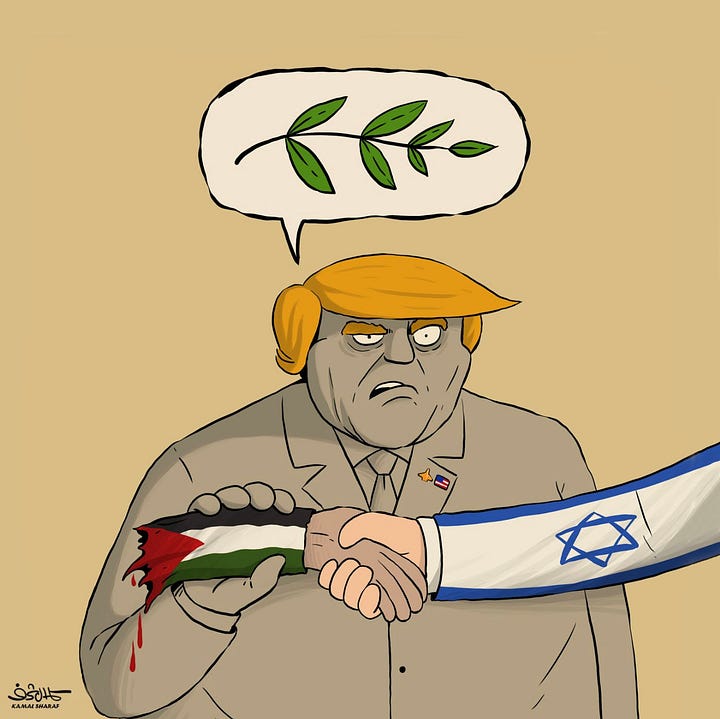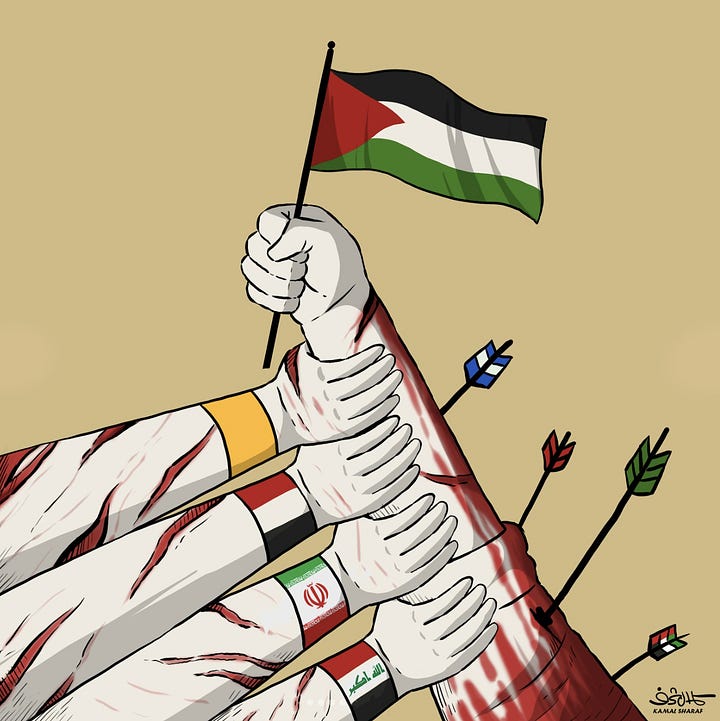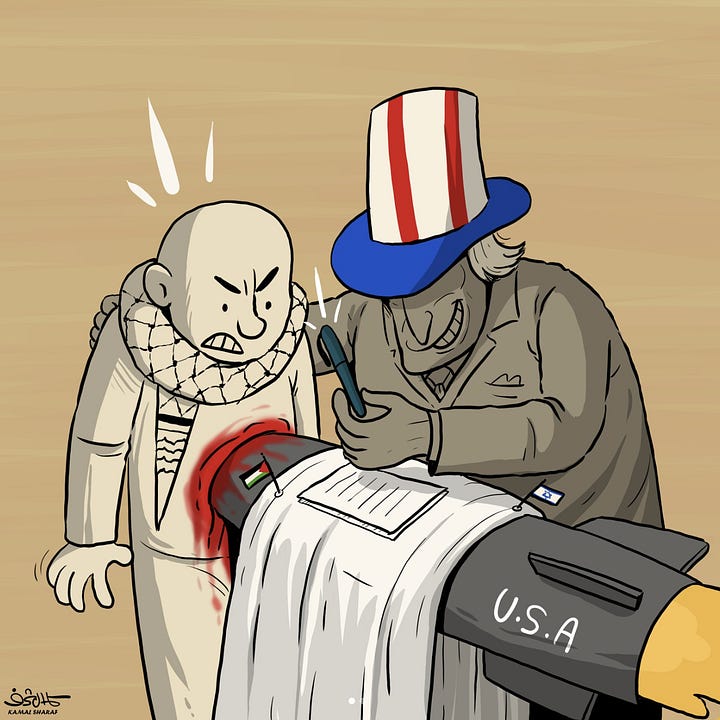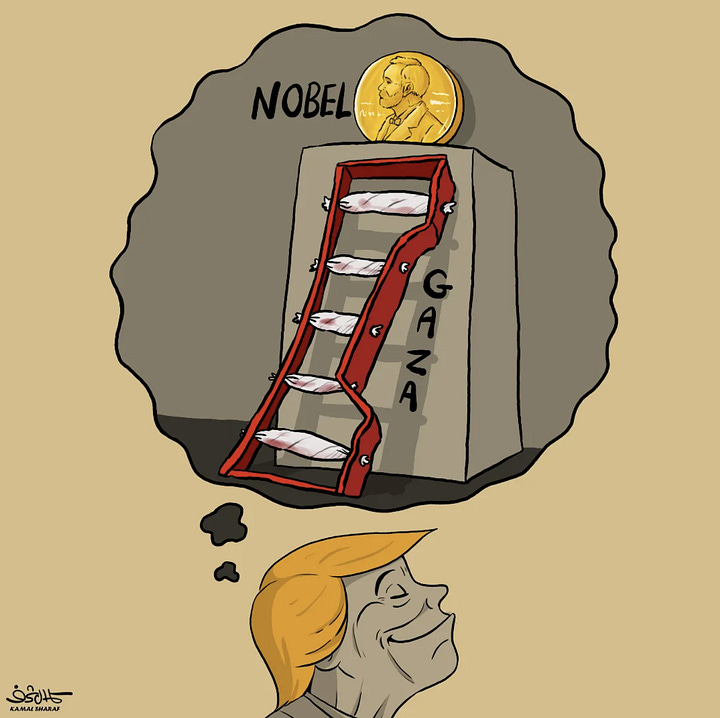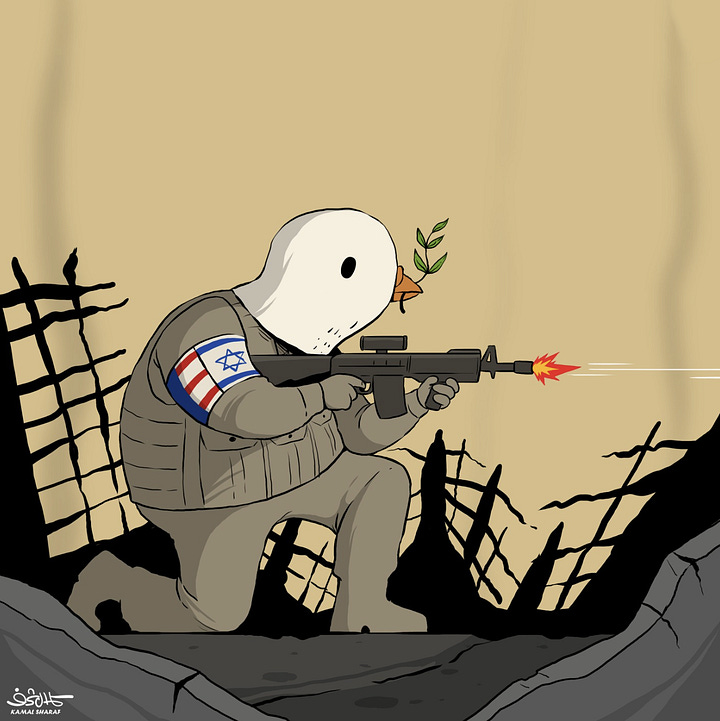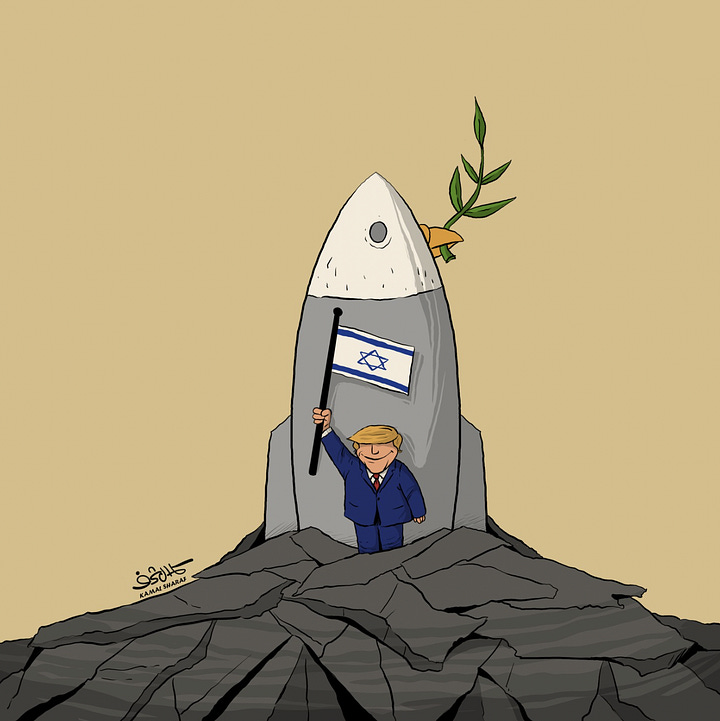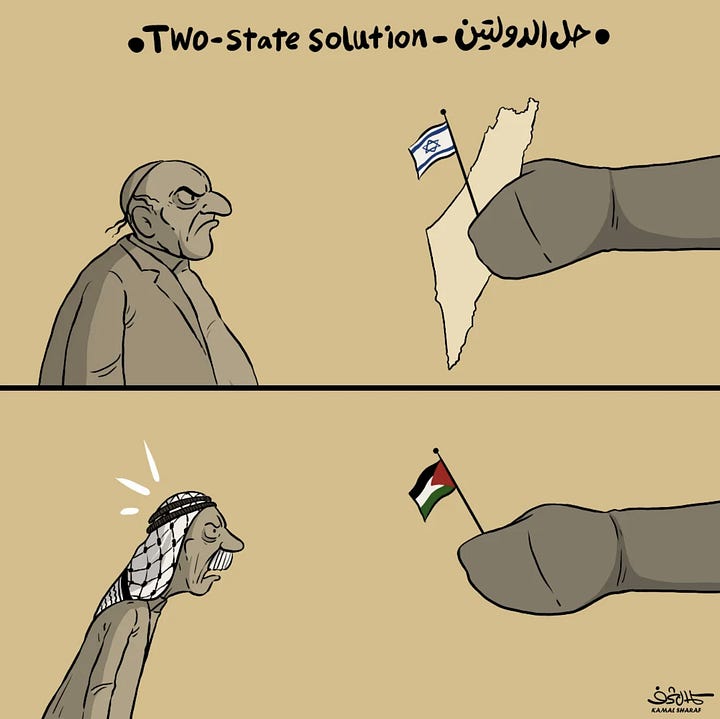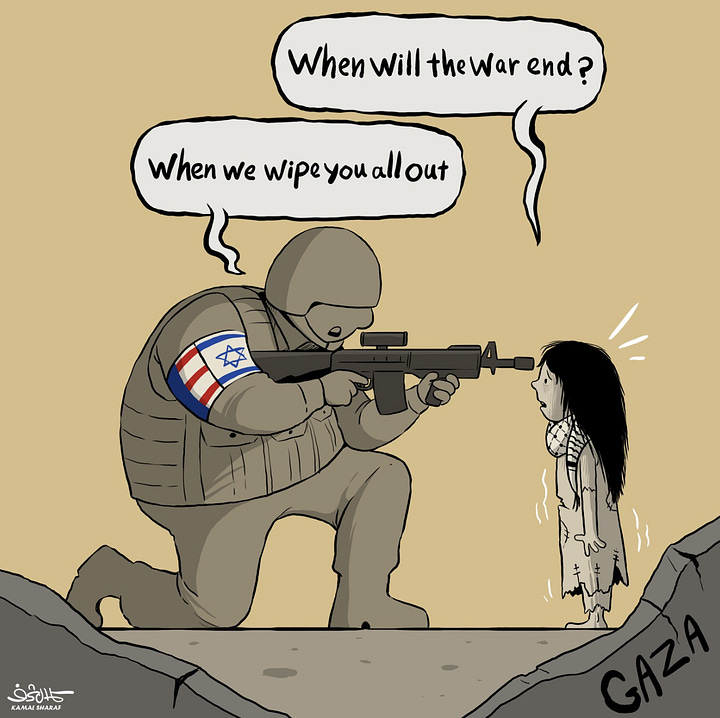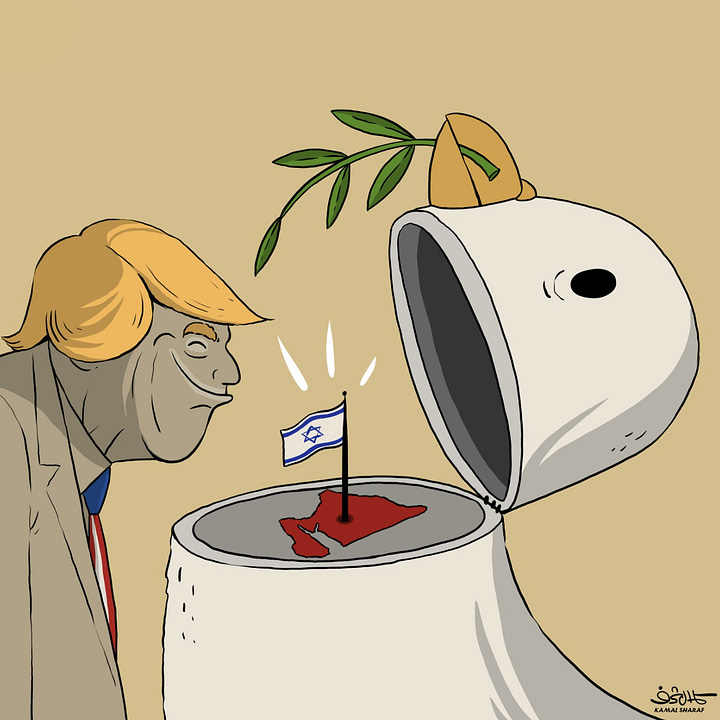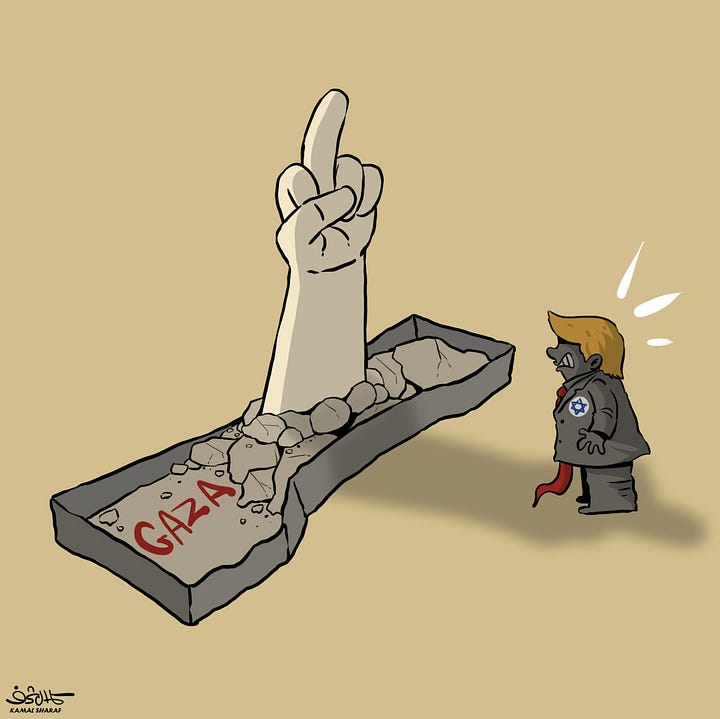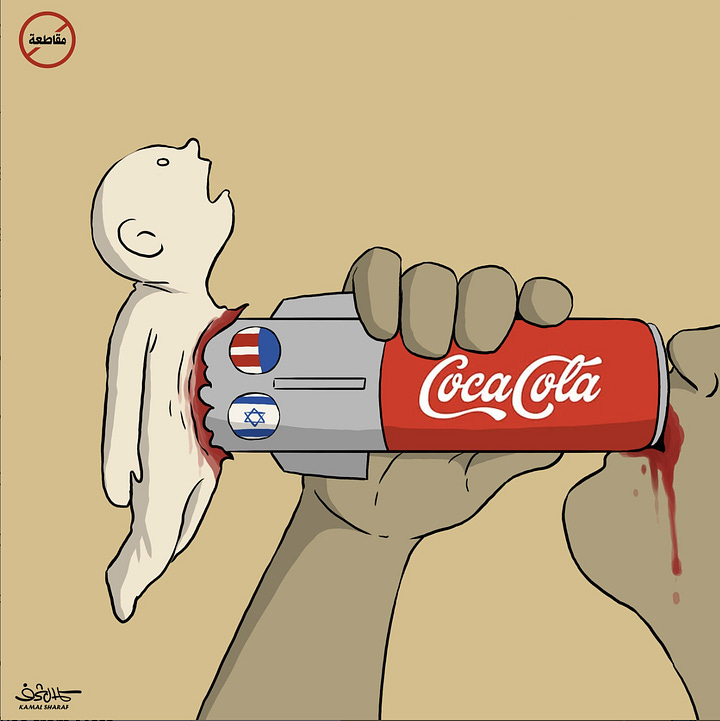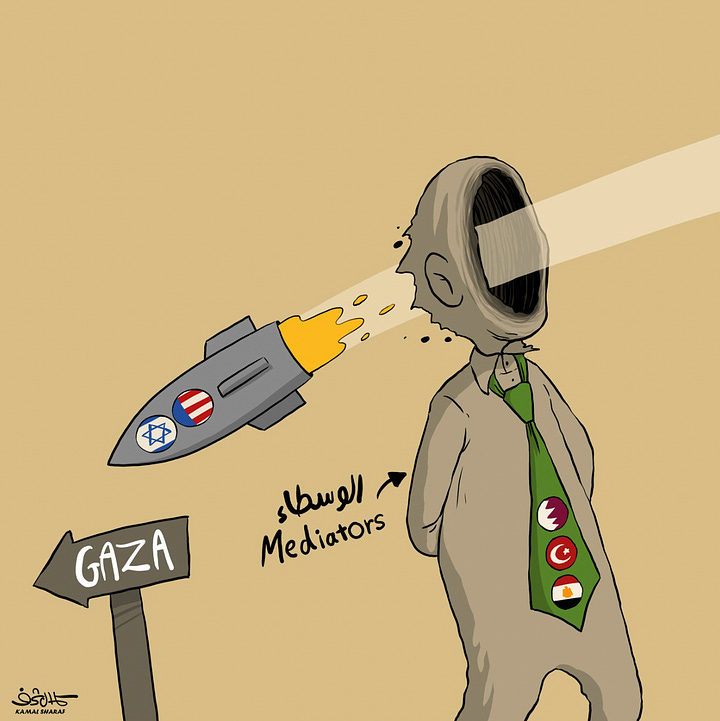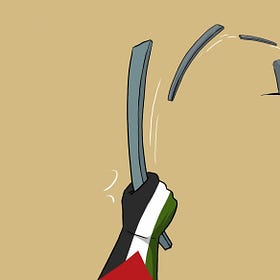Ceasefire: Continuation of Genocide by Other Means
‘Ceasefire’ is the word they use to replace the ones that should follow a livestreamed genocide — accountability, trials, reparations.
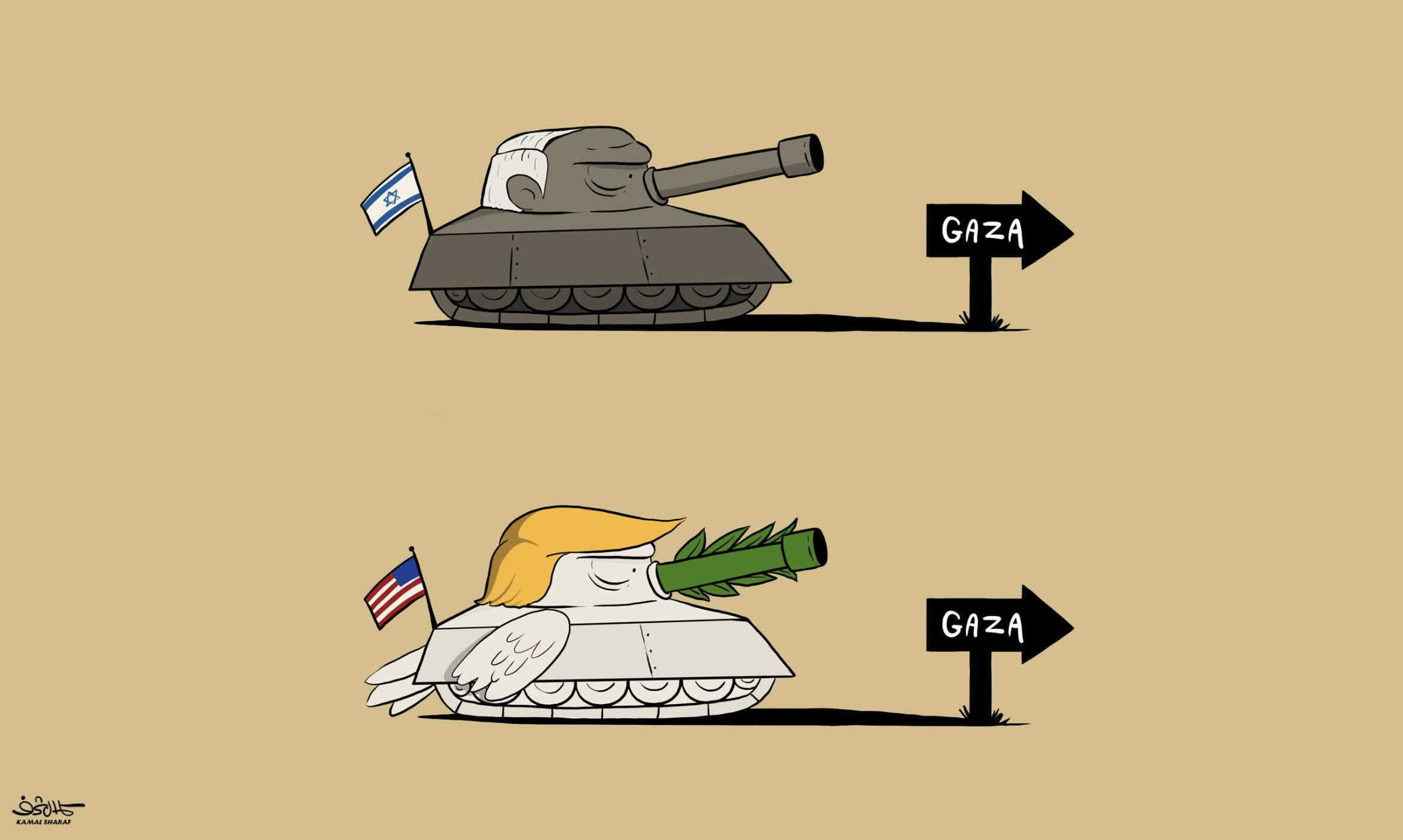
I estimated the time of Israel breaking the ceasefire by Thursday, this week. But they surpassed my expectations; only 10 days in, and 97 Palestinian people have been killed. The same people who cheered their miraculous survival for the past two years, only to be deceptively wiped out.
No word in legacy media.
Israel’s genocidal rapists, also known as the occupation army, ran into an unexploded artillery from their previous carpet bombing of Gaza, blamed Hamas for the explosion, started bombing Gaza again, over 120 times, killed almost as many people, and once again cut the aid to the Gaza Strip.
No proper word in legacy media, no storm caused for breaking the ceasefire, or killing civilians during one. Imagine what would happen if Hamas actually broke the ceasefire, killing 97 people along the way?
When the press asked Donald Trump about an incident, he said, “The ceasefire he brokered was still in place”. Hamas leadership, he said, may not be involved in the violations. “We think maybe the leadership isn’t involved in that,” he told reporters aboard Air Force One.
Caught in lies, yet again.
When the Israeli genocidal regime and terrorist militia broke the ceasefire, after the explosion of their own making, this is what they said: “We struck Hamas targets across the enclave, including field commanders, gunmen, a tunnel and weapons depots, after militants launched an anti-tank missile and fired on its troops, killing the soldiers.”
They did none of that, as Hamas had no presence. They invented field commanders, gunmen, a tunnel, and a weapons depot. What did legacy media do? This time they did arrive to the party, but not to reprimand Israel for violating the ceasefire agreement, but to call it a test of the ceasefire.
The New York Times cooked up this gem —Flare-Up of Violence in Gaza Tests Cease-Fire; while CNN gifted us with — US-brokered ceasefire appears to survive first major test as Israel and Hamas affirm commitment to deal.
We know why this ceasefire came about now. Israel was getting heavily boycotted in film, sports, and culture, and the masses were getting unruly. We also knew there was nothing to be excited about when the ceasefire was announced; we have seen too many ceasefires, and we have been paying attention.
This ceasefire means nothing.
David Miller of Tracking Power perfectly explains why: “What is often less well understood – especially when dealing with the Zionists – is that diplomacy is merely the continuation of war by other means.”
As yesterday showed you, don’t let yourselves be lulled by this ceasefire. This is just an obvious buying of some time to release the pressure on Israel, and once things calm down, they’ll resume their assault on Gaza in full effect. Probably even more, now that they don’t have to pretend to care about their extreme colonist POWs.
What’s most brutal about these two regimes, the US and Israel, working in unison, isn’t just their war crimes, but how shamelessly they use the language of peace to advance their goals of war. This face ceasefire plan continues the pattern of the ‘Deal of the Century’ in 2020 and the Oslo Accords of 1993 — using the language of coexistence to prolong Palestinian occupation and land theft.
You don’t cease fire in a genocide.
Fire is ceased in a war between two armies. This latest, manipulatively called “ceasefire,” is only the end of bombardment on a bigger scale; massacres will continue. A ceasefire without a Palestinian voice on the table, and without accountability for those in Gaza who have survived this long against so much, is just the maintenance of the biggest war crimes of our lived experience.
Ceasefire is the word used, so we don’t use the proper words that need to come after a livestreamed genocide — accountability, trials, reparations. Palestinian people deserve accountability, reparations, and trials for war crimes committed against their entire nation.
Until there is a plan on the table that goes after everyone who has participated in this crime of our lifetime, diplomacy is meaningless. Media conglomerates justifying genocide, corporations that profited from the sniping of children, and everyone who cheered and propagandized for this mass murder need to be held accountable. Without accountability, a ceasefire is meaningless. As I said, it’s the language of peace used to maintain their war crimes.
I could write for three days about why this ceasefire achieves nothing for the Palestinian people. If you have been in this movement for years, like most of my readers are, you already know this ceasefire is meaningless. Instead of delving into more analysis, I want to hear the Palestinian people speaking. What do they think? How do they feel about yet again and again, another fake diplomacy brought upon them, without anyone inviting them to have a seat at the table, yet again, designed to keep their status quo indefinite?
Let’s amplify their voices.
I want to introduce you to a Palestinian artist, an illustrator I’ve been following for two years. His work has been piercing my heart ever since I discovered it. I even included one of his illustrations in one of my most-read features, written after that performative glorious ceasefire in January 2024 — the one that never truly ceased any fire, but instead paved the way for the most gruesome, livestreamed massacre the world has ever witnessed.
The Case for the Resistance
We are nearly a week into a ceasefire that doesn’t truly feel like one. Palestinian people continue to die at the hands of their oppressors, albeit in smaller numbers. Why does this ceasefire seem like nothing more than the second phase of this genocide?
In the days leading up to this deceptive ceasefire — the days it was announced, and those that followed — Kamal Sharaf offered the most nuanced commentary on this political theater, without uttering a single word.
There’s something about Palestinian art that transcends every boundary of what we understand as art. It’s not just expression — it’s survival. It’s the only language left to a people forbidden to speak their truth. Every line, every color carries the weight of generations silenced, displaced, erased, and yet, somehow, still capable of creating beauty.
Their art is not made for galleries or applause. It’s a record of existence, a heartbeat drawn against annihilation. That’s why Palestinian art feels different. Because it is different. It’s born from pain the world refuses to see, and from a love of land so powerful, it survives even when its people are buried beneath rubble.
His art explained it all.
I have nothing to add to it. Deception, manipulation, propaganda, deceit, pain, dehumanization, injustice — it’s all there.
